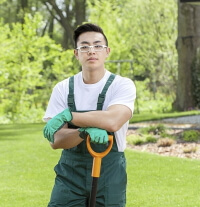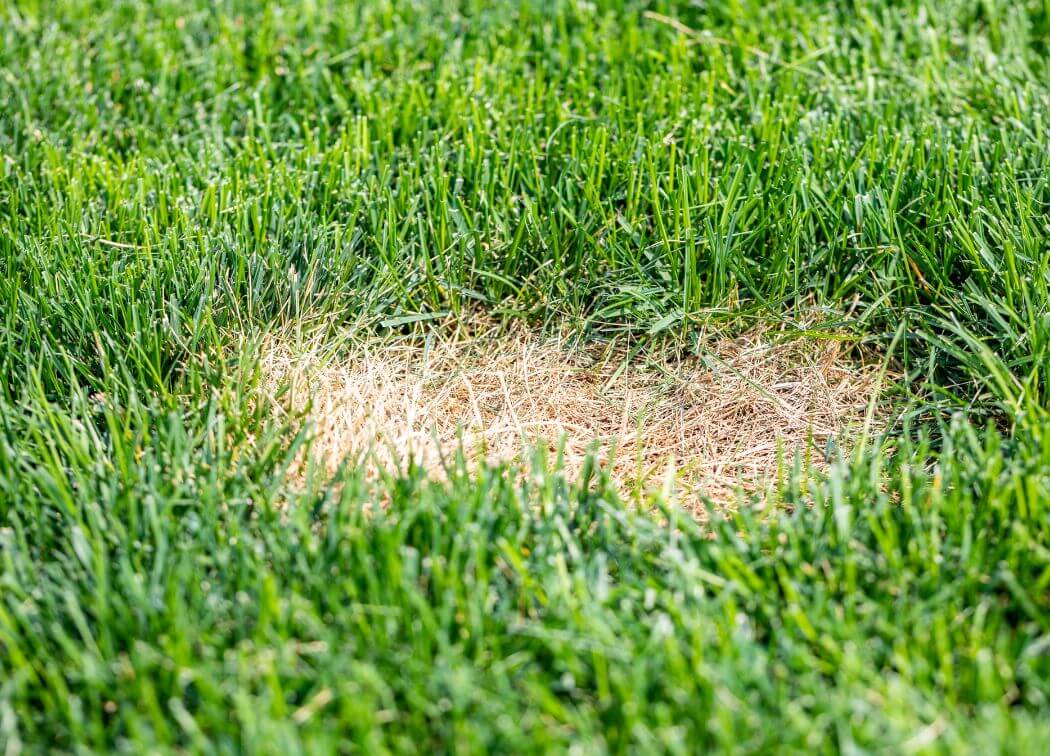The most apparent sign of a healthy lawn is lush green grass blades. So, the sight of brown patches can be frustrating.
The most common causes of brown spots in your lawn are compacted soil, poor air circulation, fungal diseases, or dormancy.
The good news is that there are remedies and preventive measures for each case that you can apply:
- treat the fungi by improving airflow and avoiding soil irrigation at night
- aerate the compacted soil
- increase lawn exposure by reducing the shade
- pest control
This article will guide you through the possible causes and their respective fixes.
Symptoms of Brown Spots in Grass Blades
Brown patches are easy to spot. As long as you conduct regular maintenance and observe them daily, you can still catch the early symptoms.
Here are some brown spot SYMPTOMS:
- Brown spots progressively grow in size as the warm season enters.
- Brown spots have a ring-like shape surrounding an area full of live, healthy grass inside.
- The entire blade turns brow except for the crown.
When you observe these signs, it’s time to dig deeper.
Causes of Brown Patches
You may think that buying an herbicide or strong chemicals to address the problem in one go is the efficient thing to do, but it’s not.
It’s crucial to figure out the causes first and find the most effective solution.
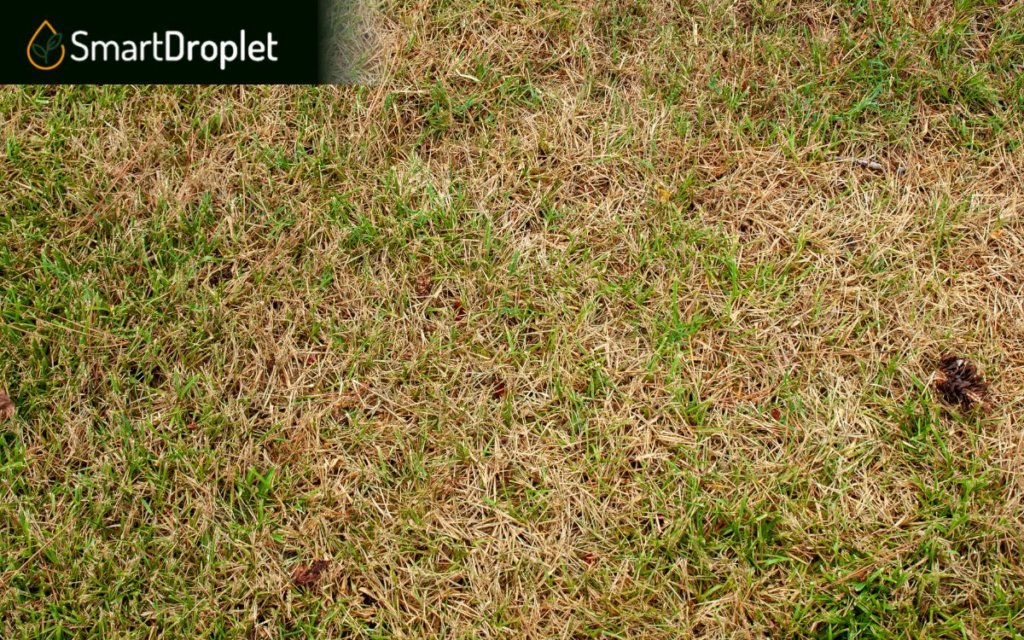
1. Brown Patch Disease Fungus
The most common cause is fungal growth.
They do not grow immediately, and they stay on the grass blade until it’s perfect for them to reproduce, which is usually during the late summer and warm seasons.
Once they start, this is the time when you’ll notice the appearance of brown patches and dead spots. As time goes on, it spreads quickly and turns the grass blade into brown grass.
Brown patch disease can also be caused by over-fertilization, thatch build-up, and poor soil quality.
2. Soil Compaction
A compacted ground can also cause dead grass and brown patches. These types of soil lead to drainage issues and poor soil aeration. In short, the water gets stuck, and the grass-roots drown.
When this happens, the root suffocation hinders nutrient supplications and leads to brown spots. The brown color could either mean dehydration, dead spots, or suffocation.
Either way, don’t ignore it.
3. Excessive Shade
We learned in middle school that plants need sunlight. Naturally, excessive shades are not advisable. Besides not performing photosynthesis, the grass becomes very prone to pests and grass diseases.
And when we say shade, we’re not just talking about roofs. You may not realize that taller trees block the sunlight from your lawn grass.
Grass needs a minimum of four (4) hours of direct sunlight daily.
4. Grass Dormancy
As warm-season grasses, it’s expected that they’re inactive or dormant during late fall up to winter. Expect most lawns to turn brown, but they should be back to green as the warm season arrives.
Brown centers during the winter are not an urgent concern. But make sure that the onset was before the cold sets in.
As mentioned in the first cause, fungi grow during the warm season. If you spot a brown patch even before the cold season sets in, it may already be a fungus waiting to reproduce.
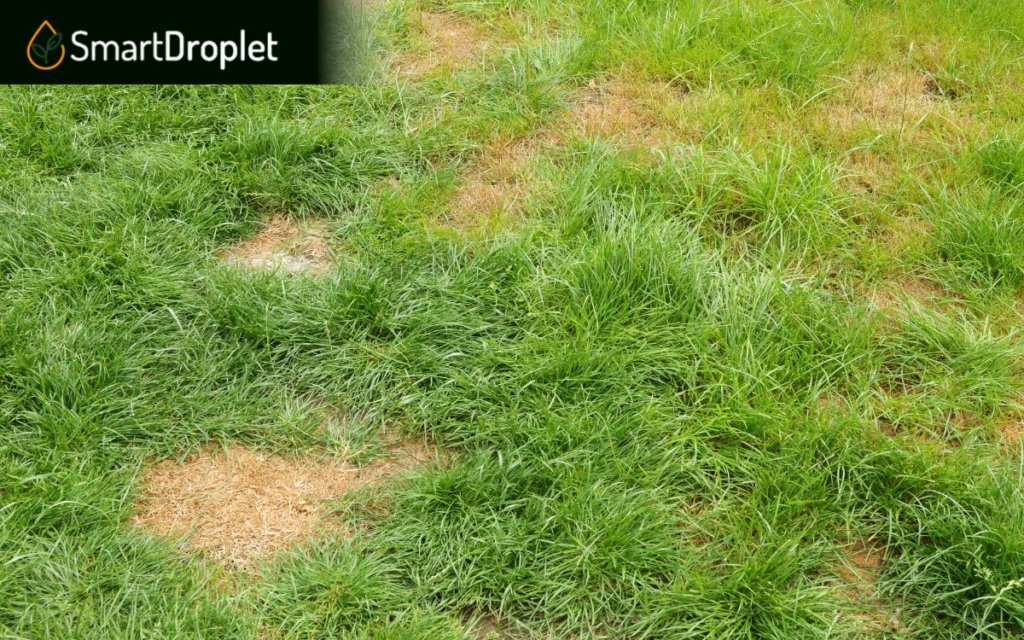
How to Fix Brown Spots in Bermuda Grass Lawns
After identifying the causes of these brown and irregular patches, it’s time to try out their corresponding treatments.
1. Treat Lawn Fungi and Brown Patch Disease
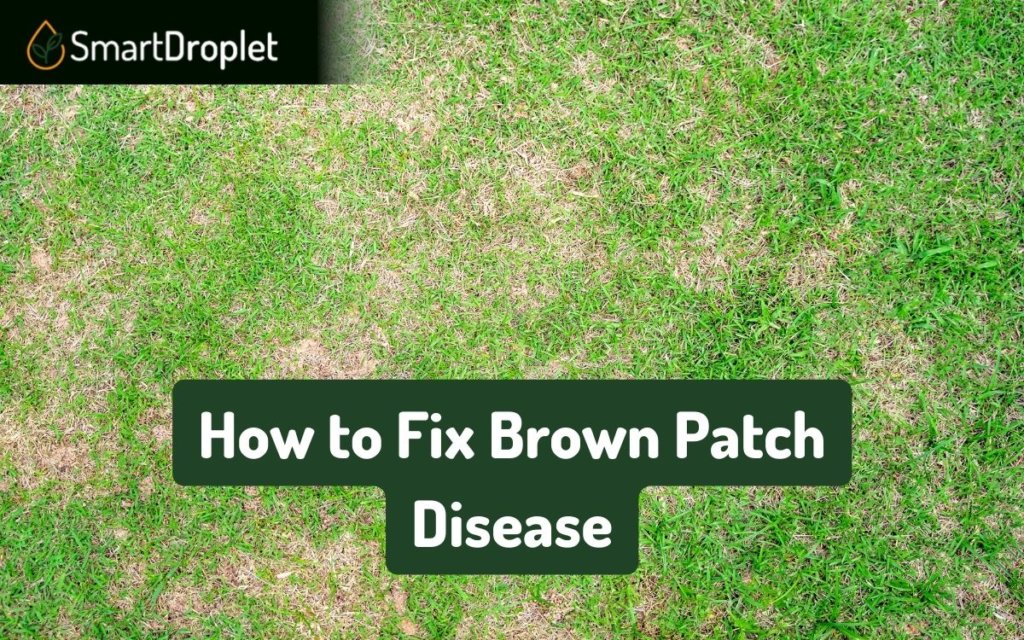
First, let’s talk about prevention. Don’t water your lawn during summer nights. It’s not the best for water absorption because waterlogging leads to fungal diseases.
When the brown spots are already present, try to improve the airflow of your grass by adjusting the surroundings.
Fix the nearby plants that may interfere with the airflow.
- Controls diseases caused by bacteria and fungi
- New Formulation works well with hose end sprayers
- Labeled for control of moss and algae
If you want to use pesticides and chemicals, they are easily available online or in your local gardening store. Apply a thin layer every two (2) weeks. But note that they won’t be cheap.
2. Aerate the Lawn to Reduce Compaction

You can address poor soil compaction by plowing the ground beneath. This method improves aeration and water flow.
It makes sure that the nutrients are absorbed by the root system and the entire lawn area. You’ll notice the return of green grass and may even discover new grass growing!
3. Reduce Shade, Increase Exposure

In some cases, brown spots can be solved by increasing the exposure of the lawn grass to direct sunlight. The prescribed duration is a minimum of four (4) hours per day.
Grass gets stressed when there’s too much shade. Allow your lawn to go through the natural process of photosynthesis and resolve half of your problems!
4. Control Pests to Get Rid of Brown Spots in Your Lawn
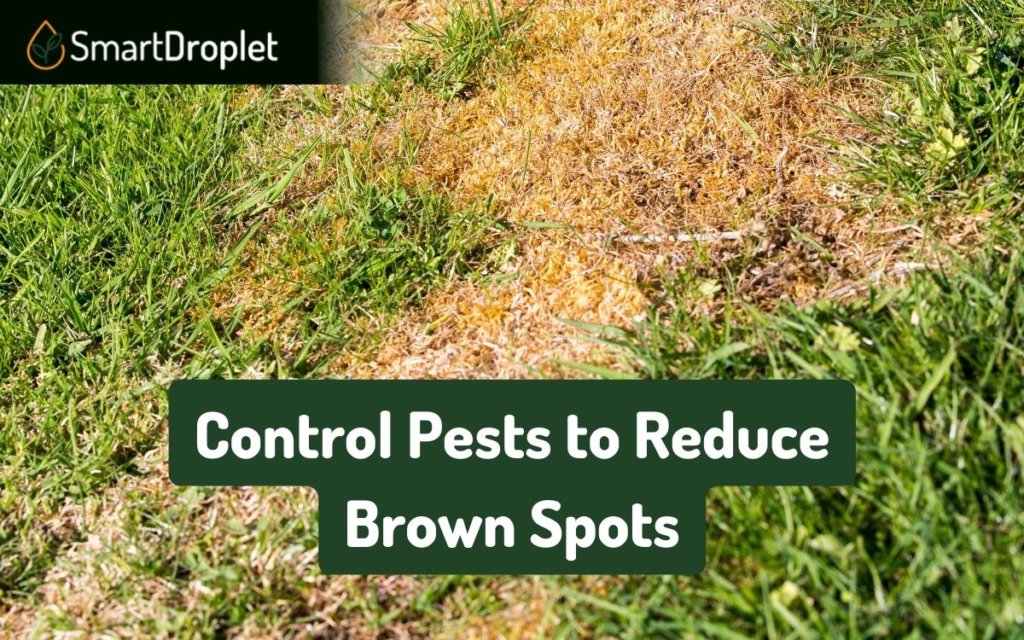
Another culprit of dead grass is pests such as chinch bugs and grub worms. Chinch bugs love your grass clippings and Kentucky bluegrass, so getting rid of them will help.
On the other hand, timing is critical in treating grubs. They grow during the start of spring.
But don’t worry, minor cases of grubs are easily controlled by home remedies such as introducing milky spore. In worse cases, use pesticides.
You can remedy the lawn damages caused by grub worms by planting resistant grass species.
How to Prevent Brown Patches in Lawn
While the treatments are easy, it’s still best to focus on preventing brown spots. It’s more cost-effective both in terms of time and money.
Overseed with a Cool-Season Grass Seed
We learned that their dormancy makes warm-season lawns turn brown during fall and winter. You can counter this by overseeding with cool-season grasses.
These grass seeds will remain active during the cold, so your lawn grass will remain green.
Identify and Treat Lawn Diseases
It’s also crucial to maintain proper lawn care and look out for potential lawn problems. Don’t wait until it’s too late before you take action.
If you’re unsure, a professional can help you identify the problem through a sampling process. All you have to do is bring the sample, which you can do easily on your own:
- Assess the affected areas with a brown patch. Choose a specific spot to focus on during sampling.
- Measure the size of the brown patch. The margin is the borderline of healthy and dead grass.
- Dig out the sample area (4×4 inches square size). Ensure that the sample has equal parts live grass and dead grass. Be careful not to leave out the roots.
- Store the sample in a cool space or at least away from heat or dryness. You don’t want the sample to dry out.
- Bring the sample to a professional for diagnosis.
Conclusion
Finding brown spots in your lawn is not a terminal case. There are a lot of possible treatments as long as you quickly find the cause.
A healthy lawn is achievable!
Overall, remember to practice lawn care regularly. It may feel like a hassle, but that’s what it takes to have a lush green lawn.
Frequently Asked Questions [FAQs]
To help you further, we’ll answer some common FAQs about brown patches on lawns.
Do Dog Urine Cause Brown Spots?
Yes! If your dog’s urine is high in salts, it can dry your lawn grass. If you’re worried about it, you can change their peeing spot or assess your dog’s food intake.
Will Organic Matter and Fertilizer Help My Soil?
Of course. Organic matter and fertilizers are always good for the soil.
It also improves poor soil quality. But remember, it’s not a magic trick that will instantly make your lawn healthy. It takes time!
And additionally, too much of it won’t be good either. Balance is key.
If you think you’ve put too much fertilizer, you can apply one inch of water around the ground for about a week.
What Lawn Care Practices Can I Do to Help with the Situation?
One of the most overlooked lawn care practices is mowing. There are proper ways to mow without harming your grass and creating brown spots on your lawn.
- Sharpen your mower blades. Dull ones are not advisable.
- Don’t mow the grass too short. Follow the appropriate height for your grass type. But generally, avoid cutting more than one-third.
How Do Weather Conditions Affect My Lawn?
Exterior factors, like these weather conditions, bring more impact than it seems.
Drought conditions are too much rain are not good – we already know that. But don’t fret; while it may affect the growth, it takes very extreme conditions to kill a whole lawn.
Posted below are advisories to remember in taking extra care of your lawn during the drought seasons:
- Keep your lawn hydrated without over-irrigation. (General rule: 1/4 inches of water per week OR 1/2 inches of water every other week.)
- Mow your lawn less frequently.
- Leave the grass clippings on the lawn for hydration. But not too much, or you’ll attract pests.
- Avoid disturbing your lawn. Don’t walk on them, don’t let your dog urinate, etc.
Can Humid Weather Cause Brown Patches?
Yes. But to clarify, it’s not the weather that causes the brown patch directly. As mentioned, fungus thrives during the warm season, including humid weather.
Lawn grass lacking sunlight and proper airflow results in fungi continuously growing and reproducing.
This is why you’re encouraged to take extra precautions in preventing rather than waiting for the brown patch to spread uncontrollably.

